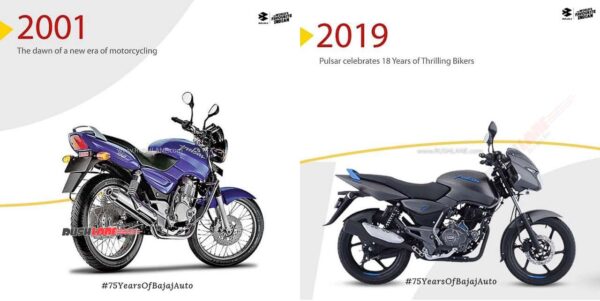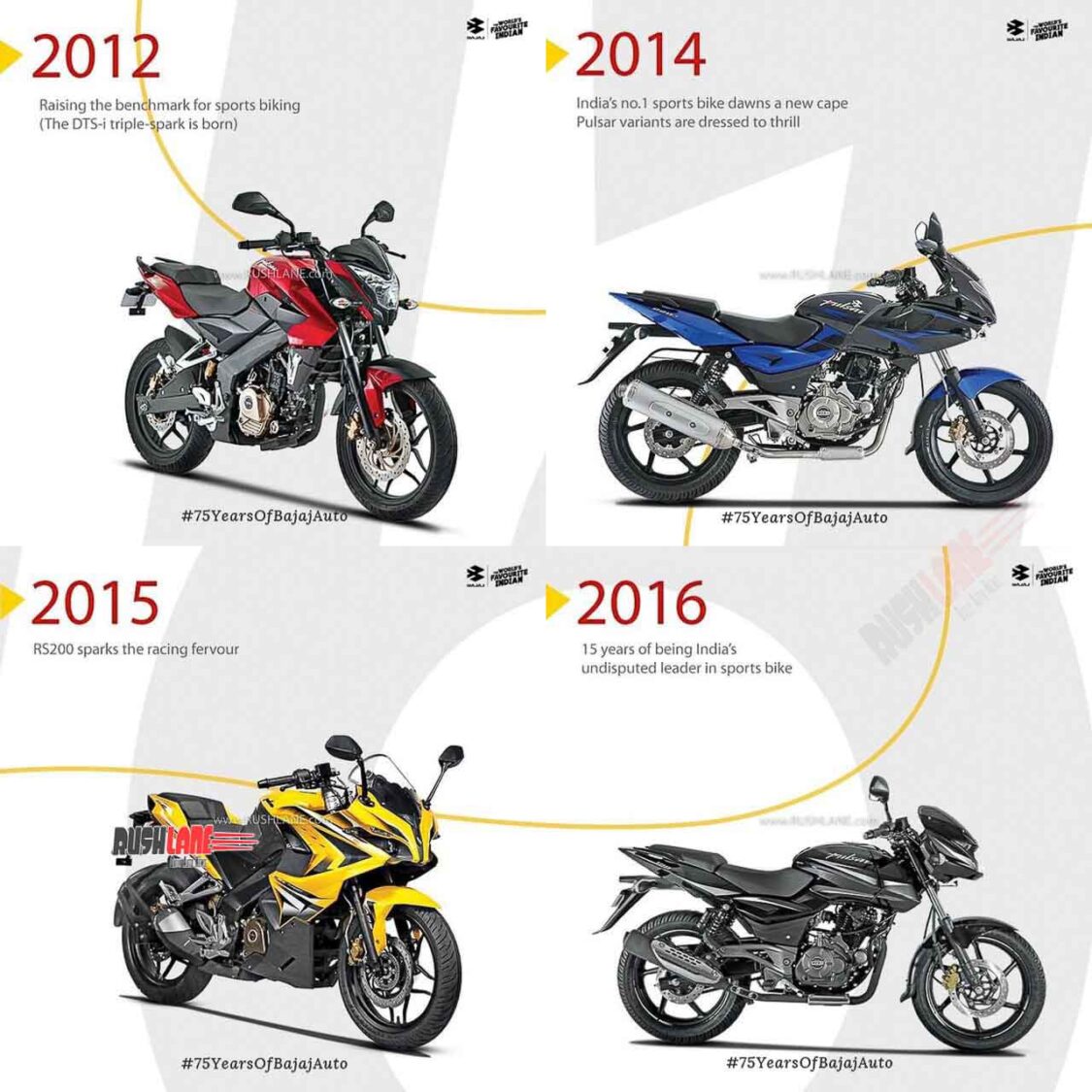
Ever since launch in 2001, Pulsar has been the benchmark for sport commuter motorcycles in the Indian two-wheeler market
The late 1980s and 90s two-wheeler segment was completely dominated by Bajaj Auto due to durable and reliable scooters. But as the century came to close popularity of manually geared scooters took a huge hit and were replaced by gearless scooters.
However, all buyers did not feel inclined to an automatic scooter that was referred to as underbone. This is when motorcycles started making a resurgence. Lightweight commuter motorcycles were already present in huge numbers in the market. What was missing was a sporty commuter bike which was not only practical but also gave the pleasure of motorcycling to a certain extent.

This is when Bajaj introduced the first sporty commuter motorcycle in the form of Pulsar which was to become a household name in the Indian two-wheeler market in future. Motorcycles prior to this were mostly on the extreme sides- some provided excellent performance while others returned a praiseworthy economy. Pulsar, however, was the best of both worlds.
2001-2003: Introduction of a whole new segment of motorcycles
First introduced in 2001 as 150cc and 180cc derivatives of it, this bike featured a retro classic design with a rounded headlamp and a tall-riding position and caught the attraction of many. Behind this pleasing design was a strong engine which put out a powerful performance at an output of 12 bhp and 15 bhp for the 150cc and 180cc versions respectively. Both units came mated to a 5-speed gearbox a rarity until then.

The first major update came in 2003 with the birth of the iconic headlamp fairing and twin pilot lamps. Not only was the design updated but Bajaj introduced its very own DTS-i Digital Twin Spark Ignition technology along with a kill switch for the first time. This resulted in an increase in power output. Therefore, this update made it look more appealing as well as made it punchier than before.
2004-2007: Major updates turned commuter bikes fun to ride
The next update came a year later when Bajaj introduced 17-inch alloy wheels to the Pulsar. It also adopted twin Nitrox suspension and a patented exhaust technology. This was followed by one which is considered to be one of the biggest updates till date. In 2006, Pulsar got an all-digital speedometer which made it the first bike in India to display speed in numbers, instead of needles. Backlit switches also added to the convenience of riders. The design got sharper with edgier body styling and wolf-eyed’ twin pilot lamps.

Following year was another milestone for the Pulsar family as Bajaj entered into the sports bike segment with the introduction of 200cc and 220cc bikes. Pulsar 200 and Pulsar 220-Fi were launched. The former was launched with an oil-cooled engine and carried a muscular styling. The latter came with a fuel-injected motor which would later prove to be so significant in stricter emission norms. Clip-on handlebars and a faired design also lent it a sports bike look.
2009-Present: Expansion of Pulsar Range of Bikes
In 2009, Bajaj introduced a lighter and smaller 135cc derivative of Pulsar called Pulsar 135 LS although it couldn’t spread the same magic as its peers. In 2012, Pulsar saw another major update when Bajaj introduced its Naked Sports range of motorcycles. The first bike under this was Pulsar NS200 which used a 200cc Liquid-cooled, DTS-i, triple spark engine. For the first time in this segment, a motorcycle used a liquid-cooled engine. The NS range further expanded with the introduction of NS160 in 2017.

In 2015, Bajaj launched another Pulsar range with a focus on track friendly machines. This led to the birth of RS range with the introduction of RS200 in which ‘RS’ stood for Racing Sports and became the quickest Pulsar to be made till date as it could touch speeds beyond 150 kmph. It was launched with a fully-faired body and came to a six-speed gearbox.
The next big landmark came in 2018 when Bajaj launched the smallest and the most affordable Pulsar in the form of Pulsar 125. It sported the exact styling of its elder sibling Pulsar 150. It was powered by a 124cc engine and received neon coloured highlights for better visual appeal.

